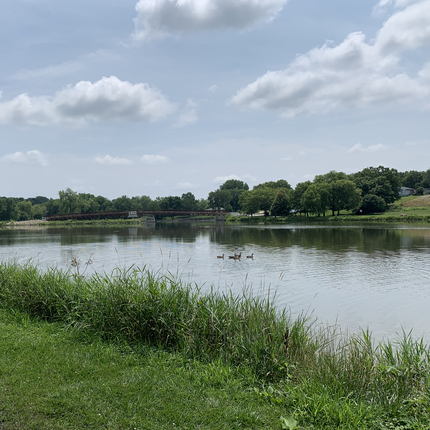By Kate Hansen and Kayla Bergman, former staff members
The Shell Rock River Watershed Management Coalition (SRRWMC), located in the northeast part of Iowa, met for the first time this summer.
The state’s newest Watershed Management Authority (WMA) is based in Nora Springs. The WMA is a cooperative agreement among jurisdictions within the same watershed that enable local leaders to work collaboratively. WMAs are authorized to assess flood risks and water quality, monitor federal flood risk planning, educate residents of their watershed area, and allocate funding made available for projects.
Born out of Iowa’s catastrophic flood of 2008, WMAs were authorized in 2010 by the Iowa Legislature. In 2012, there were six WMAs across the state. Today, with the addition of the Shell Rock coalition, there are 27.
The SRRWMC has 16 members representing local counties, cities, and soil and water conservation districts. The coalition’s initial meetings focused on laying coalition groundwork including electing leaders, approving bylaws, drafting a mission statement, and planning for next steps. Community members were also present and provided commentary on what they believe the group should prioritize.
The Center for Rural Affairs helped form this coalition after an individual who works for the City of Shell Rock approached a Center Board member who lives in that area. Center staff educated the relevant jurisdictions about the WMA structure and potential improvements to watershed health a group like this could have, and recruited those who lead the group today, including Ken Nelson of the Cerro Gordo Soil and Water Conservation District and Mike Miner of the Butler County Board of Supervisors.
After formation, WMAs typically seek funding for an assessment of the watershed—including data on water quality, flood risk, land use changes, watershed citizen perceptions, and other relevant information. These locally led coalitions must have a good understanding of the technical details of their watersheds so they can develop goals and action items to ultimately improve the natural resources and increase resiliency.
WMAs are a unique approach to addressing water concerns, such as quality, flooding, and outdoor recreation. Their structure transcends political boundaries, just like the watersheds they protect. They represent an opportunity for local leaders and residents to work together to improve the local environment, quality of life, and keep decision making local.





